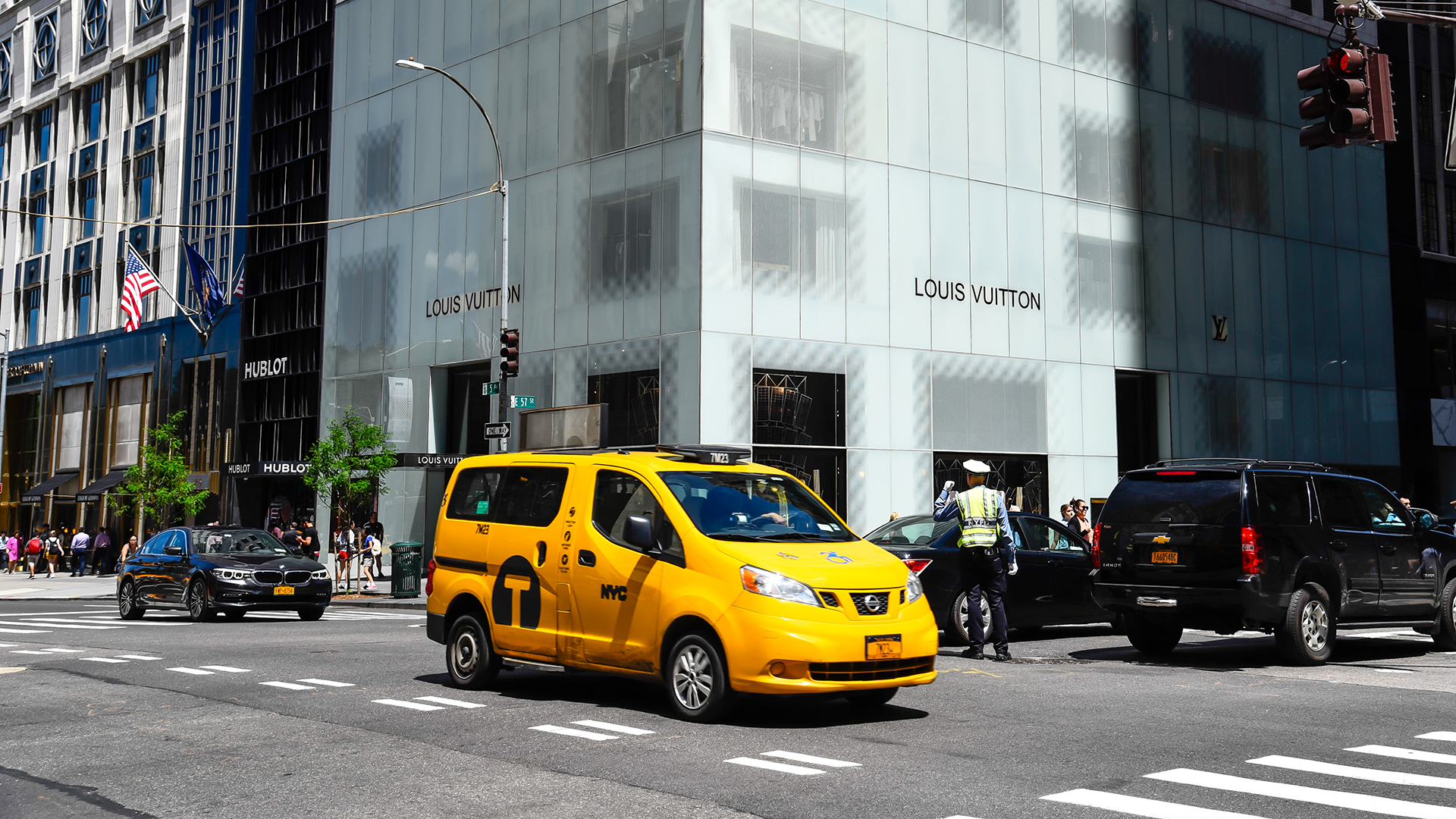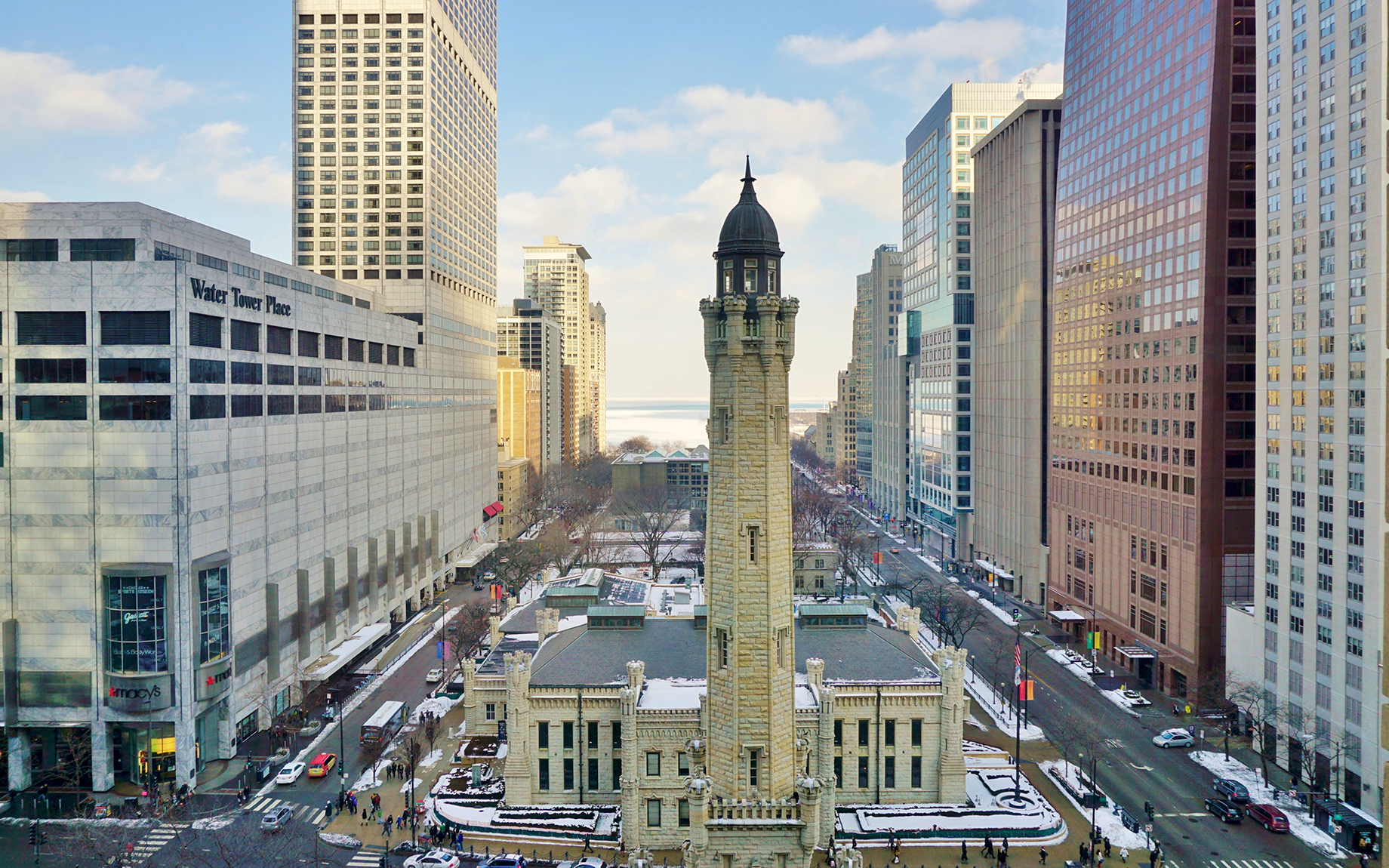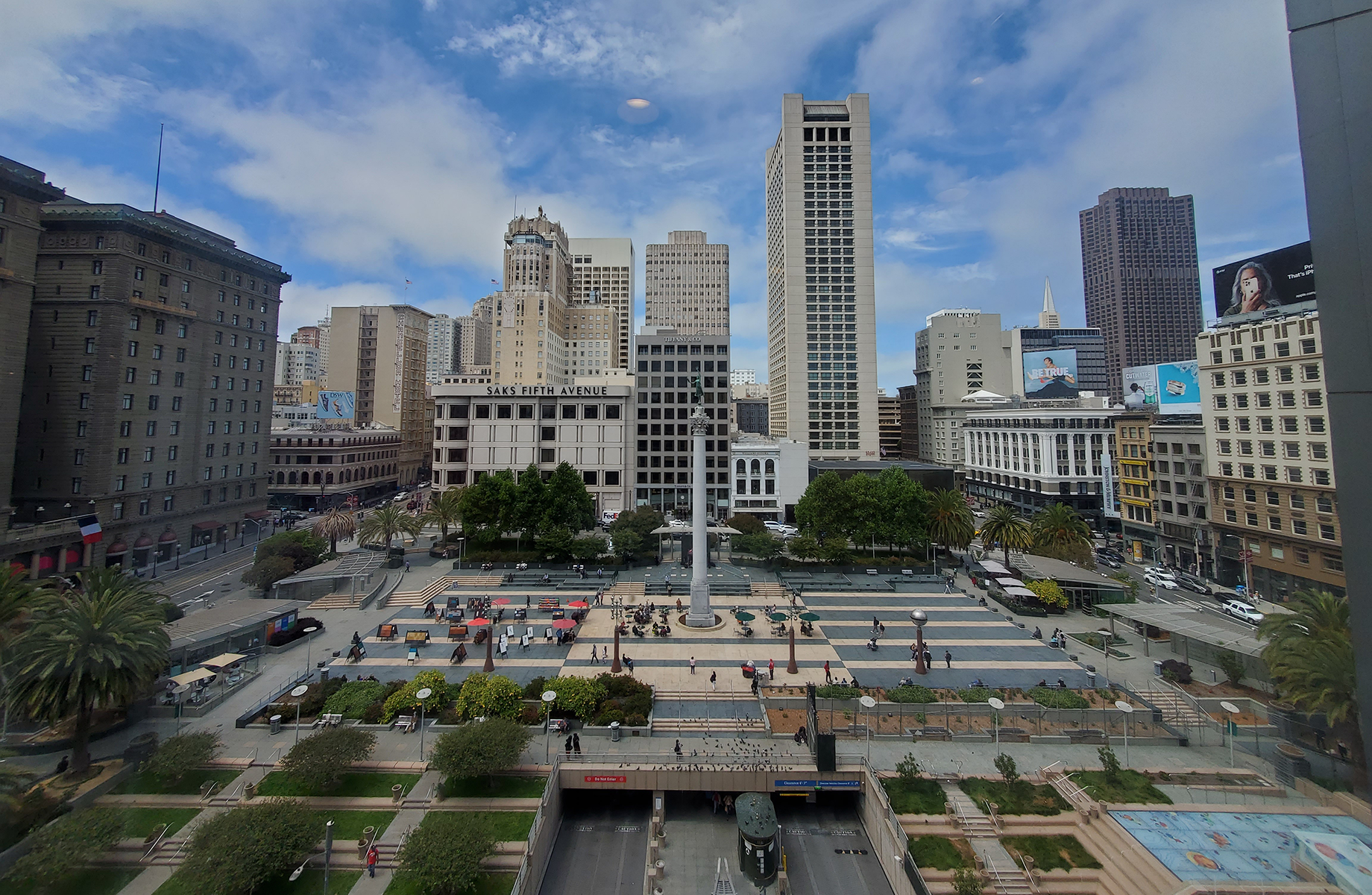Prime retail corridors in urban U.S. markets are recovering from the pandemic at significantly different rates as the return of tourism, office workers and residents varies among markets. But rather than blaming only COVID-19 and the lockdown hangover for high street woes, real estate professionals cite retail and consumer shifts prior to the outbreak as principal culprits.
Upscale corridors are beginning to reflect the rise of omnichannel strategies, as retailers opt for smaller footprints to cut back on leasing costs and the need to carry each shirt in every size and color, observers said. By way of example, H&M wants to halve the size of its presence on Chicago’s Magnificent Mile. And a developer is converting the Macy’s in San Francisco’s Union Square into a mix of uses, shrinking eight floors of retail to two. On Fifth Avenue in New York City, Canada Goose signed a lease for 8,100 square feet, whereas six years ago, it likely would have occupied as much as 15,000, pointed out Steven Soutendijk, executive managing director for Cushman & Wakefield retail services in New York.
“COVID shook things up, obviously, but urban high streets have been dealing with structural challenges for six or seven years,” he explained. “The real issue is that brands are doing more with less space. They have robust e-commerce platforms that allow them to showcase on high streets rather than carry merchandise in tens of thousands of square feet.”
Additional indicators of recovery, according to Acadia Realty Trust CEO Kenneth Bernstein, are whether residents are moving back into cities and paying higher rents than before the pandemic, as well as how secure they feel. “The return of a vibrant city is important,” he said. “Where you have a confluence of a lack of residents coming back and bad perception around safety and quality of life, those corridors may be having structural issues, as well.”
RELATED
Combating Organized Retail Crime at the Federal Level
States Create Task Forces to Combat ORC

Fifth Avenue Stabilizing
The farther in advance of the pandemic a prime corridor began adapting to new retailing strategies, the stronger it likely looks today. On New York’s Fifth Avenue between 49th and 60th streets, for example, the third-quarter availability rate of retail space declined almost 3 percentage points year over year to 18.8%, as asking rental rates fell from $2,461 per square foot to $2,350, according to Cushman & Wakefield.
Fifth Avenue’s rent correction has been ongoing since asking rates peaked in 2016 at around $3,500 per square foot, a level of froth driven by retailers’ now-abandoned practice of using marketing department dollars to help pay the rent bill on the coveted high street, Soutendijk said. Around that time, the average availability rate was 13%, and it ascended to a high of nearly 28% in 2019.
Still, while tourism in New York is rising, foot traffic along Fifth Avenue has yet to fully recover. The number of visitors in October was still nearly 32% lower than three years earlier, even as traffic in each month of 2022 improved over the same month the prior year, according to Placer.ai.
Retailers are searching for new store locations in New York amid improving tourism and the return of office workers, though inflation is making them more cautious, Vornado Realty Trust president and CFO Michael Franco reported during a third-quarter earnings call. The REIT has among its retail holdings in New York City an interest in some 283,000 square feet along Fifth Avenue.
“Overall, I think the market has bottomed,” he told analysts. “Leases are getting done, and retailers are focused on the best locations. You’re starting to see vacancy decline in many key submarkets, which obviously is the forerunner to start to have some” rent growth.

Mired Magnificent Mile
High street destinations in other parts of the country are faring less well. On corridors like Los Angeles’ Rodeo Drive and Santa Monica’s Third Street Promenade in California and Washington, D.C.’s 14th Street, visitor traffic was still 10% to 20% lower in October than three years earlier, Placer.ai reported. Similarly, visitor counts on the Magnificent Mile, along North Michigan Avenue, were 30% below pre-pandemic counts, and in San Francisco’s Union Square, they were down 48%.
In Chicago, tourism increased 86% from 2020 to 2021, the city reported, and the momentum was carrying over into 2022, based on hotel bookings earlier in the year. But several stores along the Magnificent Mile have closed or plan to, including Macy’s, Uniqlo, Gap and Banana Republic. The closing of Macy’s, in particular, affected the iconic Water Tower Place, which Brookfield Properties returned to lender MetLife Investment Management last spring.
Consequently, vacancy along the Magnificent Mile began to climb in 2018 and today is around 25%, which doesn’t include sublease space, said Todd Caruso, a CBRE senior managing director who oversees retail managing and leasing. At the same time, asking rents have dropped 25% to around $300 per square foot.
Much of the energy has moved a block to the west of the Magnificent Mile’s North Michigan Avenue, to where Rush Street intersects each Walton Street and Oak Street. That corridor caters to smaller luxury and aspirational brands — Cartier, Glossier, Celine and Vuori are a few recent entrants — and is more inviting to pedestrians, added Caruso, who relocated to Dallas from Chicago two years ago. “It feels more like a neighborhood, whereas Michigan Avenue has very large buildings and is just a little more intimidating from a walkability standpoint. The best location on Rush Street is garnering $350 a square foot, which is higher than Michigan Avenue. Never would we have thought we’d witness that.”
Acadia Realty owns assets throughout Chicago, including on Michigan Avenue and on Rush Street. While crime tends to be a popular Chicago narrative, Michigan Avenue also suffers from headwinds that are unique to the corridor, Bernstein said. Namely, the district features two enclosed malls in addition to Water Tower Place. Such assets tend to struggle in urban settings over time, he said. The Magnificent Mile will reinvent itself, he added, but it’s going to take some time.
“When people ask why North Michigan isn’t as vibrant as it should be, there are 100 things we could point to,” Bernstein declared, “but they are not all about Chicago. Rush and Walton a block away is doing better than before COVID, not only in terms of rent and retail sales but also in the quality of tenants.”

Activity in Union Square
Similarly, Union Square attracted fewer visitors in October than three years earlier, despite rising tourism in San Francisco, and it has witnessed store closures that began before the pandemic and that accelerated over the past several months, due in part to crime.
Nevertheless, vacancy, not including sublease space, improved 70 basis points year over year in the third quarter to 13.8%, and rents for premium ground-floor space have remained steady at $495 per square foot, according to Cushman & Wakefield. That’s down from $650 in 2016, and some investors and luxury brands see it as a good entry point to make bets on Union Square.
Among other deals, earlier this year Chanel paid $63 million for an 18,000-square-foot building on 340 Post St., and mattress brand Saatva opened a 6,000-square-foot store in space previously occupied by Eddie Bauer. Lincoln Property Co. and Cara Investment also acquired a 135,000-square-foot building occupied by Saks Fifth Avenue, which has a lease through 2027.
“San Francisco is heavily driven by Asian tourism, which is still slow,” said Erika Schanke, executive vice president of global retail business development for JLL. “But the luxury market is seeing a rebound, and a lot of investment activity is taking place.”
Change in Foot Traffic from 2021 to 2022
|
3rd St Promenade in Santa Monica |
Union Square in San Francisco |
14th Street in Washington, D.C. |
Georgetown in Washington, D.C. |
Magnificent Mile in Chicago |
|
|
Jan. 1 |
96.4% |
95.4% |
62.7% |
67.2% |
51.9% |
|
Feb. 1 |
60% |
73.1% |
69.5% |
90.5% |
53.5% |
|
March 1 |
37.5% |
64.1% |
59.5% |
39% |
44.7% |
|
April 1 |
20% |
53.7% |
47.9% |
45.7% |
50.2% |
|
May 1 |
5.6% |
35.8% |
29% |
11.5% |
22.4% |
|
June 1 |
-2.6% |
30.5% |
9.6% |
8.7% |
9.8% |
|
July 1 |
-0.8% |
1.9% |
-2.6% |
-4.9% |
-5.2% |
|
Aug. 1 |
-1.1% |
4.8% |
-0.2% |
-4.8% |
-7.1% |
|
Sept. 1 |
1.8% |
10.2% |
3.1% |
-9.1% |
-0.9% |
|
Oct. 1 |
-5% |
0.1% |
-4.1% |
-17% |
0.2% |
|
|
5th Avenue in New York City |
Rodeo Drive in Beverly Hills |
Walnut Street in Philadelphia |
Brickell District in Miami |
|---|---|---|---|---|
|
Jan. 1 |
63.7% |
92.8% |
45.7% |
13.4% |
|
Feb. 1 |
113.3% |
31.4% |
77.5% |
14.7% |
|
March 1 |
112.6% |
24.8% |
46.6% |
2.1% |
|
April 1 |
99.6% |
9.8% |
48.5% |
0.8% |
|
May 1 |
55.5% |
-0.4% |
21% |
-9.4% |
|
June 1 |
24.9% |
-10.3% |
9.5% |
-14.6% |
|
July 1 |
9.9% |
-13.7% |
-2% |
-7.8% |
|
Aug. 1 |
11.7% |
-6.4% |
-2.6% |
-3% |
|
Sept. 1 |
11.9% |
-1.8% |
3% |
-6.4% |
|
Oct. 1 |
6.4% |
-1.2% |
-10% |
-4.9% |
Source: Placer.ai
By Joe Gose
Contributor, Commerce + Communities Today